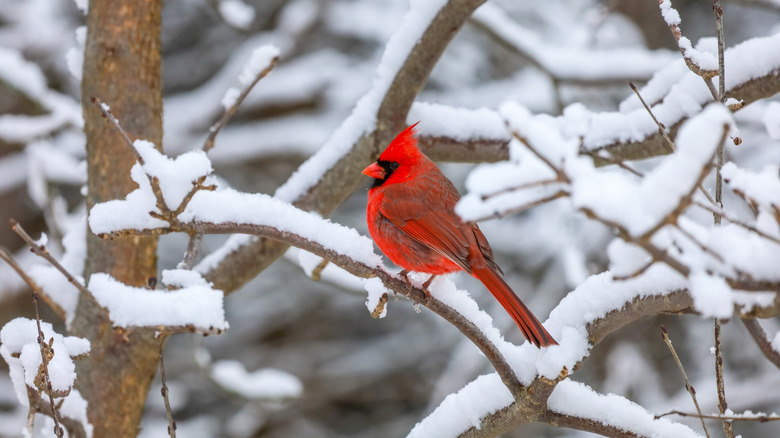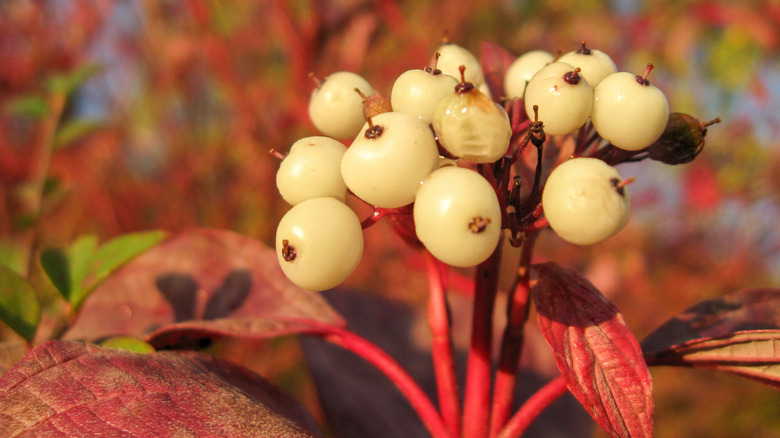The Bright Winter Tree That Will Have Cardinals Flocking To Your Garden
Depending on your location, a yard or garden in winter can be a somewhat depressing vista. Unless you've selected plants or shrubs that stay green all winter, your blooms and foliage have probably gone brown and dormant or been smothered beneath the snow. Few sights can lift winter-heavy spirits quite like that of a visiting cardinal (Cardinalis cardinalis) flaunting its crimson plumage among leafless tree branches or visiting a bird feeder. You can actually encourage more of these colorful birds to visit by carefully selecting trees to draw them in — and if your selections include the red-twig or red-osier dogwood (Cornus sericea), you can enjoy an additional pop of winter cheer thanks to the red color of its bare branches.
Dogwoods in general tend to attract songbirds, from cardinals to bluejays, grosbeaks to thrushes. Birds are drawn in by the tasty berries, as well as the opportune nesting sights dogwoods' branches offer. The red-twig dogwood happens to be a particularly good choice, as its fruits have especially high fat content crucial for birds trying to keep their strength up in advance of the lean winter months. If you happen to situate a bird feeder nearby offering sunflower seeds — accepted by many as the best type of bird seed for attracting more cardinals to your yard — you might just be able to enjoy a view graced by an abundance of both red birds and red bark all through the winter. As a matter of fact, one particularly bright red cultivar is called 'Cardinal'!
Caring for a red-twig dogwood
Technically a shrub in the dogwood (Cornus) genus, the red-twig dogwood is native to many areas of the U.S., typically found growing wild in wetlands and swampy areas. It is hardy in USDA Zones 2 through 7, and it's a vigorous grower that can attain heights of 6 to 9 feet. Since red-twig dogwoods have a tendency to spread horizontally via root suckers to form colonies, they can help control erosion and make for an excellent privacy screen. You can remove these with a spade if you'd rather it stay put, of course. It produces clusters of small white flowers in the early summer, and the bluish-white berries that follow are enthusiastically snapped up by birds all through the autumn.
You can situate a red-twig dogwood in full sun or part shade, as long as the soil is rich and moist like its preferred wild habitats. It doesn't require much pruning for its health, but if you remove some of the oldest stems in the spring, you can enjoy fresh, vivid color on the new growth. You can either start from seeds or take cuttings from a dogwood to start a tree. It's generally an adaptable shrub when it comes to soil and climate, but be sure to watch for issues such as canker and leaf or twig blights, as well as signs of insect pests.

